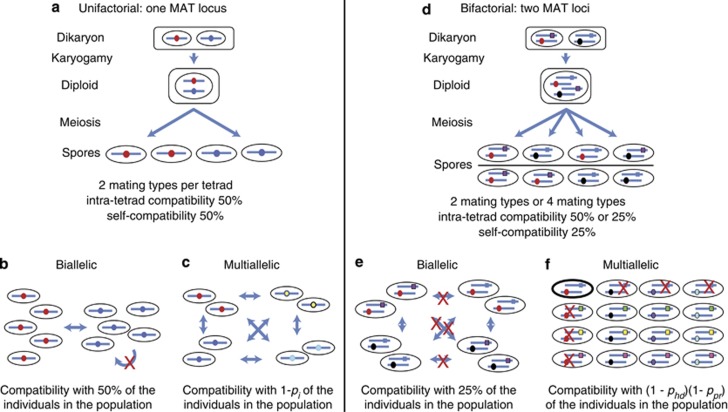Figure 2.
Overview of fungal compatibility between haploid individuals for unifactorial and bifactorial systems. (a) A unifactorial dikaryon produces gametes of two different mating types, resulting in 50% intra-tetrad compatibility. Each unifactorial spore is compatible with 50% of the population in a biallelic system (b) and with 1-pi in a multiallelic population (c). (d) A bifactorial dikaryon will produce gametes of four different types. In each tetrad formed, either two (in 1/3 of tetrads) or four (in 2/3 of tetrads) different mating types are produced (the figure shows only half of the options), resulting in 50 or 25% intra-tetrad compatibility, respectively. Each spore is on average compatible with 25% of the spores produced by the same dikaryotic mycelium. (e) In a biallelic species, each haploid individual is compatible with 25% of the population. (f) When multiple alleles exist, each spore is compatible with (1−phd) (1−ppr) of the population. In this example, four alleles exist for each mating-type locus, resulting in compatibility to ∼56% of the population, under equal allele frequencies and random mating.

